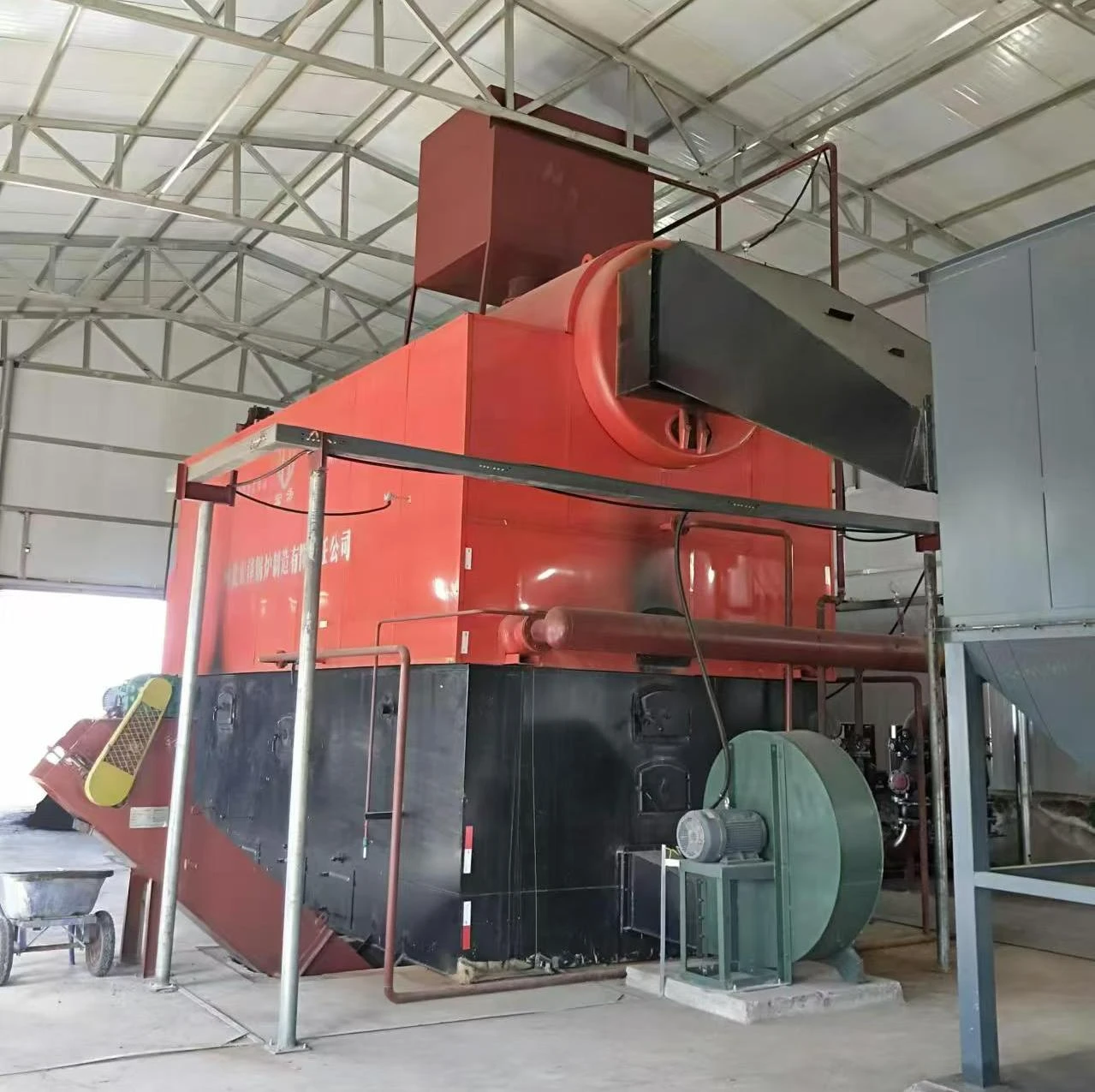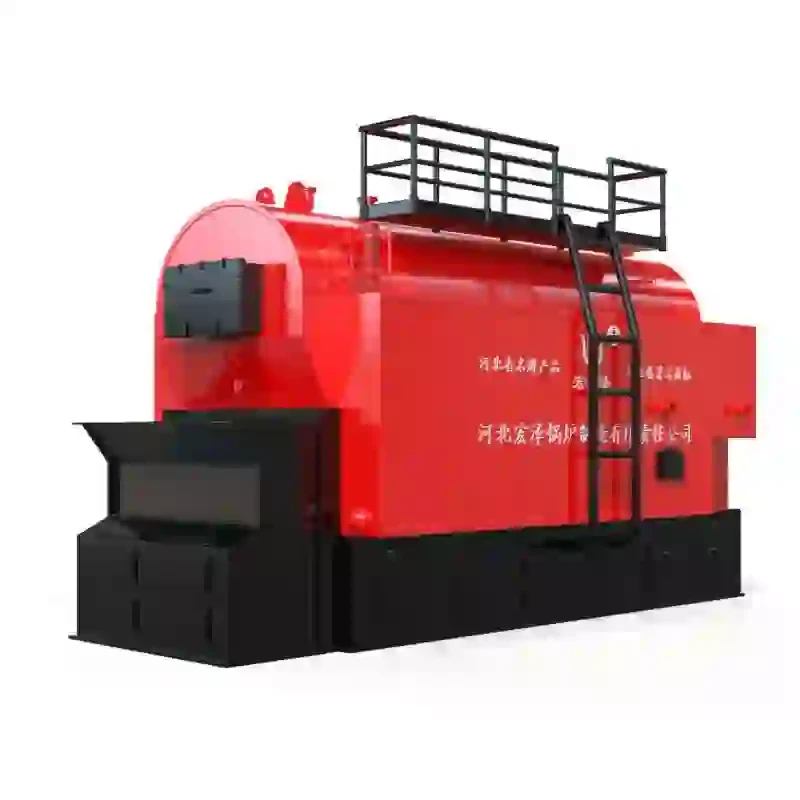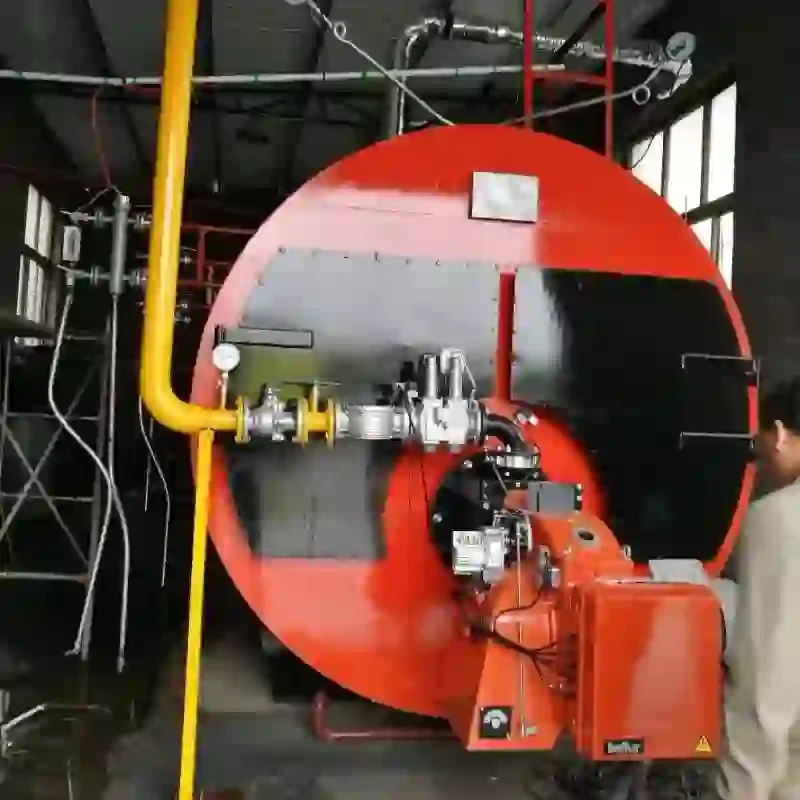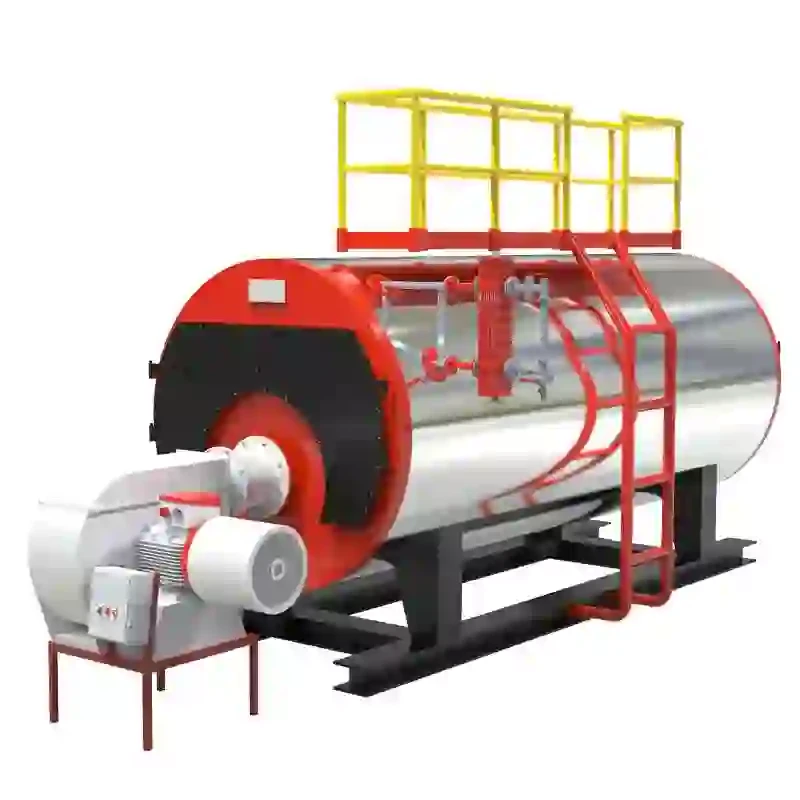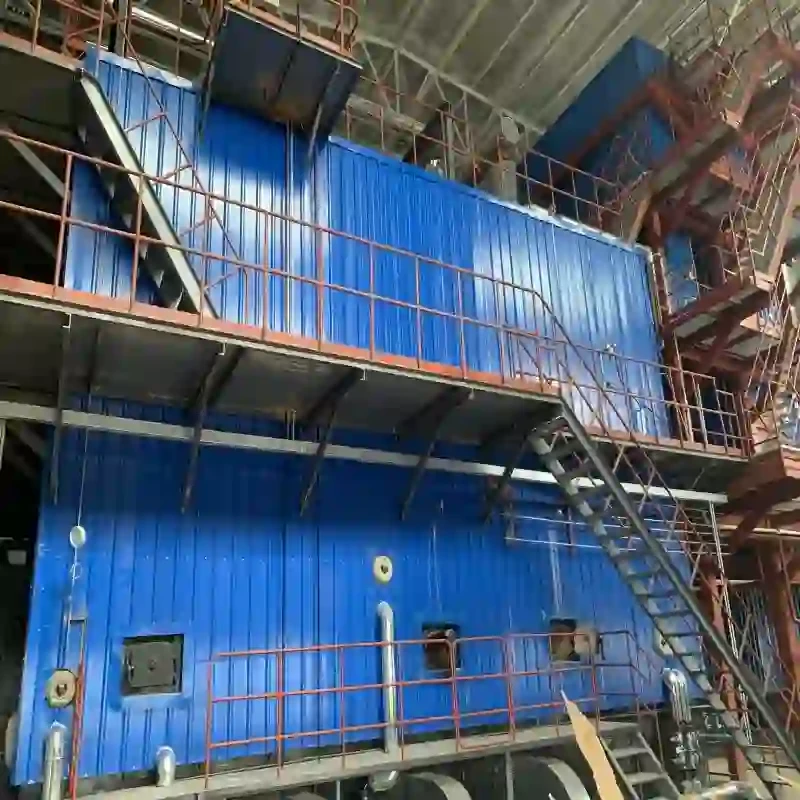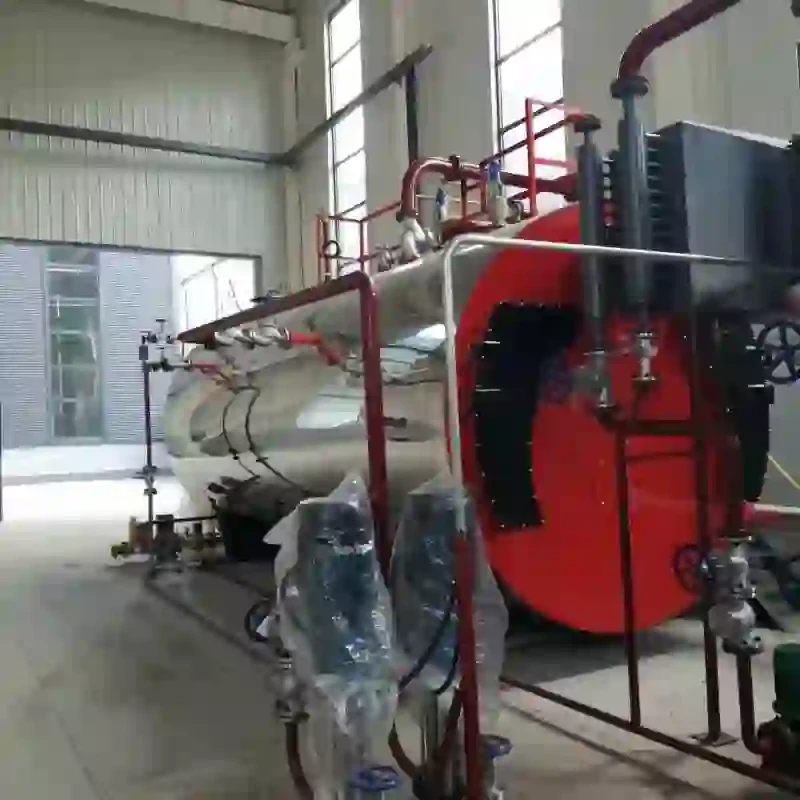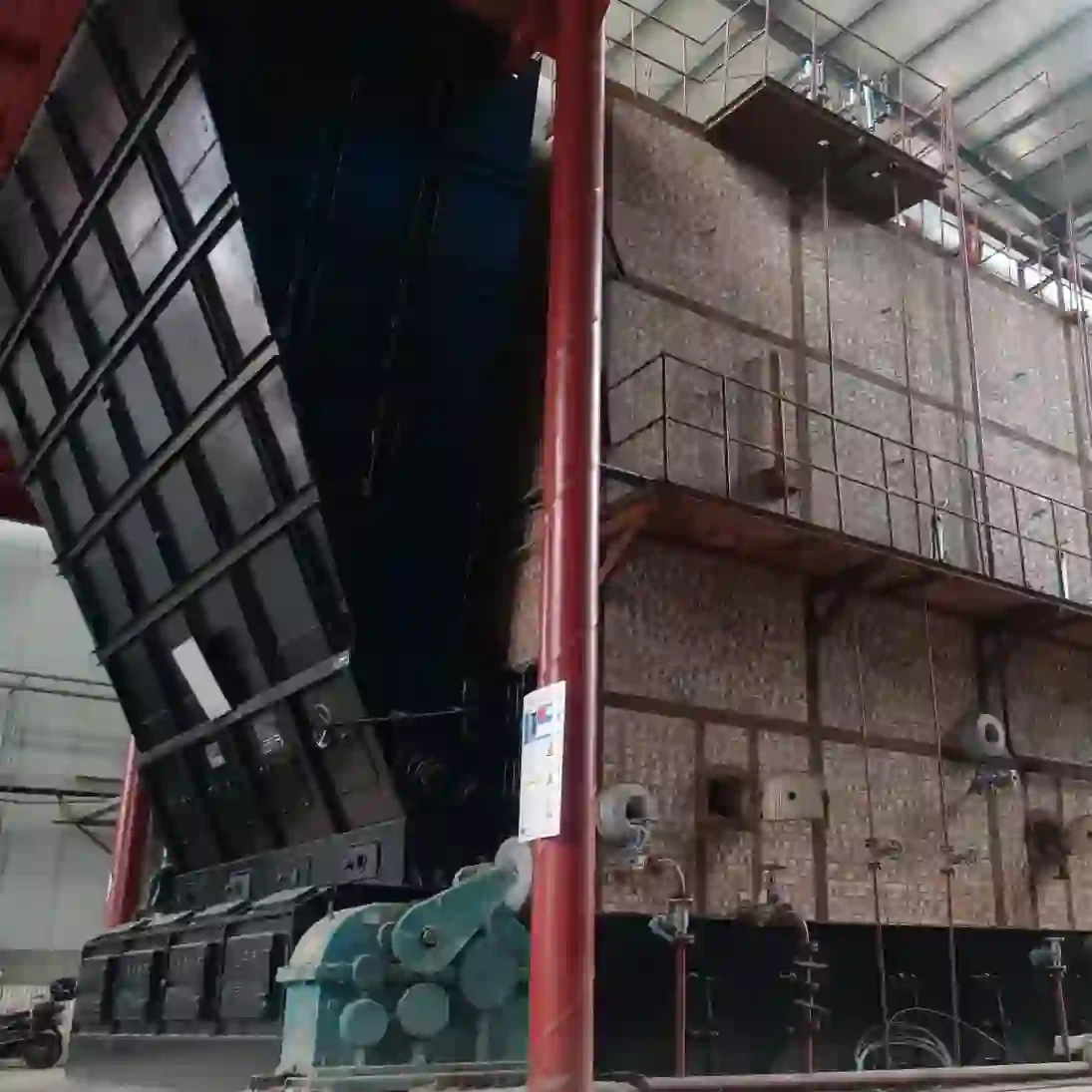
Aug . 16, 2025 03:40 Back to list
Coal Fired Thermal Oil Boiler: Efficient Industrial Heating
Understanding the Modern Coal Fired Thermal Oil Boiler: Trends, Technology, and Applications
In the industrial landscape, the efficient and reliable supply of heat is paramount for a multitude of processes, ranging from petrochemical refining and textile dyeing to food processing and asphalt production. While global energy paradigms are shifting towards renewables, the robust and cost-effective nature of coal as a fuel source continues to position the coal fired thermal oil boiler as a critical component in many heavy industries, particularly in regions with abundant coal resources. Modern advancements have significantly transformed these systems, moving beyond conventional designs to incorporate sophisticated control mechanisms, enhanced material science, and improved combustion technologies that address environmental concerns and optimize energy utilization. These boilers operate by heating thermal fluid, which then transfers heat to various industrial processes without the need for high pressures associated with steam systems, offering a safer and more stable heat source. This technical exposition delves into the intricate workings, design philosophies, operational benefits, and strategic considerations for deploying advanced coal-fired thermal oil systems in today's demanding industrial environment. The focus will be on the latest innovations that ensure not just efficiency and reliability but also compliance with increasingly stringent environmental regulations, making them a viable long-term investment for businesses seeking consistent thermal energy solutions. Understanding the nuanced interplay between fuel properties, boiler design, and thermal fluid characteristics is crucial for maximizing operational longevity and minimizing lifecycle costs in this specialized field.
The prevailing industry trends for coal fired thermal oil boiler systems underscore a dual emphasis on heightened energy efficiency and reduced environmental footprint. Manufacturers are increasingly integrating features such as advanced flue gas heat recovery systems, precise combustion control, and multi-stage dust collection technologies to lower fuel consumption and abate emissions of particulate matter, SOx, and NOx. The drive for greater automation is also evident, with modern boilers often equipped with sophisticated Programmable Logic Controllers (PLCs) and Distributed Control Systems (DCS) that enable real-time monitoring, remote operation, and predictive maintenance capabilities. This shift towards smart boiler technology not only enhances operational safety and reduces manual intervention but also provides valuable data analytics for continuous process optimization and energy management. Furthermore, the selection of high-grade, corrosion-resistant alloys for critical components, coupled with advanced welding and non-destructive testing techniques, significantly extends the operational lifespan and reliability of these boilers, minimizing downtime and maintenance overheads. Customization plays a pivotal role, as industries often have unique thermal requirements and site-specific constraints, necessitating tailor-made solutions that optimize performance within particular operational parameters. The strategic deployment of a cutting-edge coal fired thermal oil boiler requires a comprehensive understanding of these evolving trends, ensuring that investments yield not only immediate operational benefits but also sustainable long-term value in a dynamic industrial ecosystem.
Operational Dynamics: How a Coal Fired Thermal Oil Boiler Works
To understand how a coal fired thermal oil boiler functions, it's essential to grasp the core principles of indirect heat transfer. Unlike steam boilers, which directly heat water to generate high-pressure steam, thermal oil boilers circulate a specialized synthetic or mineral oil through a closed-loop system. The process initiates in the combustion chamber, where pulverized or lump coal is fed and ignited. The intense heat generated from the combustion of coal then radiates and convects to a series of intricately coiled tubes through which the thermal oil continuously flows. As the oil absorbs this heat, its temperature significantly rises, reaching temperatures that can exceed 300-350°C (572-662°F) at very low or even atmospheric pressures, a distinct advantage over high-pressure steam systems. The heated thermal oil is then pumped to various heat consumers (such as reactors, dryers, presses) within the industrial facility, where it transfers its thermal energy to the process. After transferring its heat, the now-cooler oil returns to the boiler for reheating, completing the closed loop. This continuous circulation ensures a stable and precise temperature control for the industrial process, which is critical for applications requiring tight thermal tolerances. Key components include the furnace, serpentine coils, expansion tank (to accommodate oil volume changes), circulation pump, and a sophisticated control system that monitors temperatures, pressures, and flow rates to ensure safe and efficient operation.
The efficiency and safety of a coal fired thermal oil boiler largely depend on the design of its heat transfer surfaces and the effectiveness of its combustion system. Modern designs often incorporate multi-pass flue gas designs to maximize heat recovery from the combustion gases before they are exhausted, significantly improving thermal efficiency. Furthermore, advanced combustion technologies, such as fluidized bed combustion (FBC) or stoker firing, are employed to ensure complete and clean burning of coal, reducing unburnt carbon and minimizing slag formation. FBC, for instance, suspends solid particles in a stream of air, creating a turbulent mixture that ensures excellent contact between fuel and air, leading to higher combustion efficiency and the ability to burn various grades of coal. The robust construction, typically involving high-strength alloy steels for pressure parts, ensures structural integrity under continuous high-temperature operation, contributing to a longer operational life. Safety interlocks, pressure relief valves, and automatic shutdown systems are integral to prevent overheating or system failures. The overall system is designed for operational stability and minimal supervision, providing a reliable and consistent heat source tailored for demanding industrial applications. Understanding these operational nuances is crucial for engineers and procurement specialists when evaluating boiler solutions.
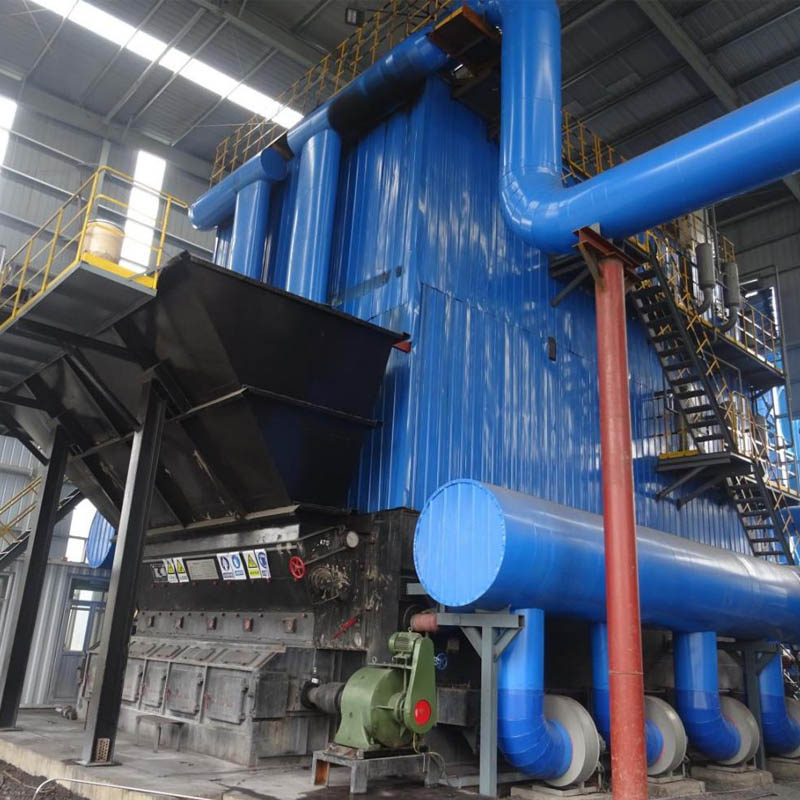
Technical Specifications and Performance Metrics for Coal Fired Thermal Oil Boiler Systems
Selecting the appropriate coal fired thermal oil boiler requires a meticulous review of its technical specifications and performance metrics, which directly influence operational efficiency, safety, and return on investment. Key parameters include the rated thermal capacity, typically measured in MW (MegaWatts) or kcal/hr, which indicates the maximum heat output the boiler can deliver. Operating temperature and pressure ranges are also critical; for thermal oil boilers, high temperatures (up to 350°C or higher) are achievable at near-atmospheric pressures, offering a significant safety advantage over high-pressure steam systems. Fuel consumption rates, expressed in kg/hr, are directly linked to the boiler's thermal efficiency, which quantifies the percentage of fuel energy converted into useful heat. Modern designs aim for efficiencies exceeding 85%, often reaching 90% or more with economizers and air preheaters. Furthermore, the footprint of the boiler system is an important consideration for facilities with limited space. Environmental performance metrics, such as emissions of NOx, SOx, and particulate matter, must comply with local and international standards (e.g., EPA, EU directives). Material specifications for the heating coils and pressure parts, often high-grade seamless steel tubes (like 20G, 16Mn, or SA106B), determine the boiler's durability and resistance to thermal stress and corrosion. Understanding these specifications ensures alignment with specific process requirements and regulatory compliance, solidifying the boiler's long-term viability.
The table below presents typical technical parameters for a range of modern coal fired thermal oil boiler models, illustrating the diversity in capacity and performance. These values represent a balance between efficiency, operational flexibility, and economic viability for various industrial scales. It's crucial to note that actual performance can vary based on fuel quality, operating conditions, and maintenance practices. The service life, often specified for upwards of 20 years, is a testament to the robust engineering and material quality, provided proper maintenance and operational protocols are followed. The heating surface area, expressed in square meters, directly correlates with the boiler’s ability to efficiently transfer heat from the combustion gases to the thermal oil. Factors such as the design pressure of components, including the circulation pump and pipelines, must exceed the maximum operating pressure to ensure safety margins. For instance, the maximum allowable working pressure (MAWP) for the oil circuit is typically designed to accommodate thermal expansion and transient pressures. Boiler control systems, often leveraging PLC technology, offer precise temperature regulation (±1-2°C), automatic ignition, and comprehensive safety interlocks, contributing significantly to operational reliability and reduced labor costs.
| Parameter | Unit | Model HTY-1000 | Model HTY-2000 | Model HTY-4000 |
|---|---|---|---|---|
| Rated Thermal Capacity | MW / (Gcal/h) | 1.16 / 1.0 | 2.32 / 2.0 | 4.65 / 4.0 |
| Working Temperature (Max.) | °C | 320 | 330 | 350 |
| Working Pressure (Min. gauge) | MPa | 0.3 | 0.3 | 0.4 |
| Thermal Efficiency | % | ≥ 85 | ≥ 87 | ≥ 88 |
| Fuel Consumption (Std. Coal) | kg/h | ~180 | ~350 | ~700 |
| Heating Surface Area | m² | 65 | 120 | 230 |
| Expected Service Life | Years | >20 | >20 | >20 |
Precision Manufacturing & Unwavering Quality Assurance
The manufacturing process of a coal fired thermal oil boiler is a testament to precision engineering, robust material selection, and stringent quality control. It commences with the careful sourcing of high-grade steel plates and seamless tubes, often specialized alloys like 20G (GB/T5310) or SA106B (ASTM), known for their excellent heat resistance and mechanical strength under high-temperature conditions. These materials undergo rigorous incoming inspection, including chemical composition analysis and ultrasonic testing, to ensure conformity to international standards such as ISO, ASME, and ANSI. The manufacturing workflow typically involves several critical stages: first, material cutting and plate rolling to form the cylindrical shell and furnace components; second, tube bending and coiling for the intricate heat exchange surfaces, where advanced CNC tube bending machines ensure precise geometries and minimal stress points. Welding is a cornerstone of boiler construction, with extensive use of automated submerged arc welding (SAW) and shielded metal arc welding (SMAW) processes, performed by certified welders. Multi-pass welding techniques are applied to ensure full penetration and defect-free joints, which are paramount for high-pressure and high-temperature integrity.
Post-welding, each component of the coal fired thermal oil boiler undergoes extensive Non-Destructive Testing (NDT) to detect any internal flaws or imperfections. This includes X-ray radiography for critical weld seams, ultrasonic testing for material thickness and hidden defects, magnetic particle inspection for surface cracks, and dye penetrant testing for surface-breaking discontinuities. Hydrostatic pressure testing is a mandatory final stage, where the entire pressure part assembly is subjected to pressures significantly higher than its maximum operating pressure to verify structural integrity and leak-tightness. Surface treatment, insulation application with high-density refractory materials, and external cladding are then meticulously performed to maximize thermal efficiency and provide corrosion protection. The final assembly involves integrating the combustion system, control panels, and auxiliary equipment. Throughout this entire process, adherence to ISO 9001 quality management systems is strictly maintained, ensuring traceability of materials, calibration of equipment, and documentation of every inspection point. This meticulous approach to manufacturing ensures a projected service life exceeding 20 years, providing industries with a dependable and durable heat source capable of withstanding the rigors of continuous operation in environments like petrochemical plants, textile mills, and asphalt production facilities, where consistent heat and corrosion resistance are critical.
Versatile Applications and Real-World Case Studies
The versatility of the coal fired thermal oil boiler extends across a broad spectrum of industrial applications where stable, high-temperature heat is required without the complexities and safety concerns associated with high-pressure steam. In the petrochemical industry, these boilers are indispensable for heating reactors, distillation columns, and storage tanks, ensuring precise temperature control for chemical reactions and separation processes. Their ability to deliver consistent heat at high temperatures and low pressures makes them ideal for heating asphalt and bitumen in road construction and roofing material production, preventing solidification and maintaining viscosity. In the textile industry, they are widely used for heating dyeing vats, drying ovens, and calenders, where uniform heat distribution is crucial for product quality. Furthermore, the food processing sector leverages thermal oil boilers for frying, baking, and sterilization, benefiting from the clean and dry heat delivery that prevents product contamination and ensures hygiene. Other notable applications include wood processing (plywood, MDF production), rubber and plastic manufacturing (molding, curing), and even in the pharmaceutical industry for various drying and heating processes. The inherent advantages of thermal oil systems, such as absence of corrosion, freezing, or scaling, significantly reduce maintenance requirements and extend equipment lifespan compared to traditional water-based heating systems.
A compelling case study exemplifies the practical benefits. A leading textile manufacturer in Southeast Asia recently upgraded its aging steam boiler system to a new coal fired thermal oil boiler with a capacity of 4.65 MW. The previous steam system frequently suffered from pipe corrosion and required constant water treatment and blowdown, leading to significant operational costs and downtime. Post-installation of the thermal oil system, the client reported a remarkable 15% reduction in overall energy consumption due to the boiler's higher thermal efficiency and the absence of steam losses. The stable and precise temperature control of the thermal oil improved dyeing consistency, reducing product rejects by 8%. Furthermore, the reduced maintenance needs and elimination of water treatment chemicals resulted in substantial savings in operational expenditure. This transition also enhanced workplace safety by removing the risks associated with high-pressure steam. Another instance involves a major asphalt plant that implemented a customized coal fired thermal oil boiler solution to replace an outdated direct-fired system. The new boiler delivered more consistent and uniform heating of the asphalt tanks, preventing hot spots and cold spots, which significantly improved the quality and homogeneity of the asphalt mix. This upgrade not only optimized production but also enabled compliance with stricter environmental regulations through integrated flue gas treatment systems, showcasing the transformative impact of modern thermal oil boiler technology in real-world industrial settings.
Manufacturer Comparison: Choosing Your Strategic Partner
When investing in a coal fired thermal oil boiler, the choice of manufacturer is as critical as the product itself. The market offers a diverse range of suppliers, each with unique strengths in terms of technology, customization capabilities, and after-sales support. A key differentiator lies in the manufacturer's commitment to R&D, reflected in advanced combustion technologies like circulating fluidized bed (CFB) or pulsating combustion, which offer superior efficiency and emission control. Material quality and manufacturing precision, often evidenced by international certifications such as ASME U Stamp, CE Marking, and ISO 3834 (for welding quality), are paramount for long-term reliability. Furthermore, the sophistication of the boiler's control system, whether it employs a basic PLC or an integrated DCS, dictates the level of automation, monitoring, and remote diagnostic capabilities. Some manufacturers excel in providing highly customized solutions, tailoring boiler design to specific fuel characteristics, site constraints, and process integration requirements, which can yield significant operational advantages. Conversely, others might focus on standardized models that offer cost-effectiveness and faster delivery times for general applications. Understanding the balance between upfront investment and long-term operational savings, including fuel efficiency and maintenance costs, is vital.
Evaluating manufacturers for a coal fired thermal oil boiler also involves assessing their after-sales service infrastructure, including parts availability, technical support, and the provision of preventive maintenance programs. A robust service network ensures minimal downtime and optimized performance throughout the boiler's lifespan. Companies with extensive experience in the specific industry (e.g., petrochemical, textile) often possess valuable insights into process-specific challenges and can offer more tailored and effective solutions. The table below offers a generalized comparison across different types of manufacturers based on typical market offerings. It serves as a guide for B2B decision-makers to prioritize factors that align with their operational needs, budget constraints, and strategic goals. For instance, a manufacturer with strong R&D might offer cutting-edge designs for ultra-low emissions, while another could specialize in rapid deployment and economical solutions. Reputational aspects, including customer testimonials, industry awards, and service longevity, also provide crucial insights into a manufacturer's reliability and commitment to client satisfaction. This holistic evaluation helps in forging a strategic partnership that ensures the efficient, safe, and sustainable operation of the thermal oil boiler system for decades to come.
| Feature | Premium Manufacturer | Mid-Tier Manufacturer | Cost-Effective Manufacturer |
|---|---|---|---|
| Thermal Efficiency | Excellent (90%+) with advanced heat recovery | Very Good (85-90%) | Good (80-85%) |
| Material Quality & Certification | Highest Grade (ASME, PED, ISO certified) | High Grade (ISO, some international norms) | Standard Grade (Local/national norms) |
| Control System | Advanced DCS/PLC with AI-enabled predictive maintenance | Modern PLC with HMI, good automation | Basic PLC, manual override capabilities |
| Customization Capability | Extensive, highly engineered solutions | Moderate, adaptable to main parameters | Limited, mostly standard configurations |
| After-sales Support | Global network, comprehensive maintenance contracts, remote diagnostics | Regional presence, standard warranty and parts support | Local support, basic warranty |
| Price Range | Higher Investment, Lower TCO | Medium Investment, Balanced TCO | Lower Investment, Potentially Higher TCO |
Tailored Solutions & Unwavering Support
Recognizing that no two industrial operations are identical, leading manufacturers of coal fired thermal oil boiler systems emphasize the provision of highly customized solutions. This bespoke approach ensures that the boiler system perfectly integrates with existing plant infrastructure and specifically addresses unique process heating requirements, fuel type availability, emission regulations, and space constraints. Customization can involve adjustments to boiler capacity, thermal oil type, fuel feeding systems (e.g., specific stoker types for different coal grades), flue gas treatment technologies (e.g., bag filters, ESPs, desulphurization units), and control logic. For instance, a facility needing extremely precise temperature control for sensitive chemical reactions might require advanced cascaded control loops and highly responsive burner management systems. Similarly, a plant in a densely populated area might prioritize ultra-low NOx burners and comprehensive particulate matter removal systems to comply with stringent local air quality standards. The design process typically begins with a detailed thermal load analysis and site assessment, followed by collaborative engineering design to optimize efficiency and operational safety. This iterative process, involving close communication between the client's technical team and the boiler manufacturer's engineers, culminates in a system that delivers maximum performance and long-term reliability.
Beyond initial customization and delivery, comprehensive after-sales support is a cornerstone of a reliable coal fired thermal oil boiler investment. This includes not just warranty coverage but also technical assistance, spare parts availability, and proactive maintenance programs. A standard warranty for pressure parts typically ranges from 12 to 24 months, with extended options often available. Delivery periods can vary depending on customization and scale, usually ranging from 3 to 6 months from order confirmation to shipment. Reputable manufacturers provide extensive documentation, including detailed operation and maintenance manuals, piping and instrumentation diagrams (P&IDs), and electrical schematics. Customer support often extends to remote monitoring capabilities, allowing engineers to diagnose issues and provide guidance without on-site visits, thereby minimizing downtime. Scheduled preventive maintenance, often including thermal oil analysis, component inspection, and calibration, is crucial for preserving the boiler’s efficiency and extending its operational lifespan. Training programs for client's operational staff are also a key component, ensuring that the plant personnel are fully proficient in operating and maintaining the complex boiler system safely and efficiently. This holistic approach to service underscores a manufacturer's commitment to building lasting partnerships with their industrial clients, ensuring optimal performance and maximum uptime for their thermal energy solutions.
Frequently Asked Questions (FAQs)
Thermal oil boilers offer several key advantages: they operate at high temperatures (up to 350°C and beyond) at very low or atmospheric pressures, which significantly enhances safety by eliminating the risks associated with high-pressure steam. They also avoid issues like corrosion, scaling, and freezing that are common in water-based systems, drastically reducing maintenance requirements and chemical treatment costs. Furthermore, thermal oil systems provide more precise and stable temperature control, which is crucial for sensitive industrial processes, and boast higher overall thermal efficiencies by eliminating condensate losses and flash steam. The closed-loop nature of the thermal oil system ensures minimal fluid loss, leading to lower operating expenses and environmental impact.
A well-maintained coal fired thermal oil boiler typically has a service life exceeding 20 years, often outperforming steam boilers due to the absence of water-related corrosion and scale buildup. Key factors influencing its longevity include the quality of materials used (e.g., high-grade seamless steel tubes for heating coils), the precision of manufacturing processes (especially welding and NDT), the quality of the thermal oil and its proper maintenance (regular oil analysis to prevent degradation), and adherence to a strict preventive maintenance schedule. Proper operation within design parameters, avoiding thermal shock and overloading, also contributes significantly to extending the boiler's lifespan and ensuring continuous, reliable heat supply over decades of operation.
Environmental concerns for coal fired thermal oil boiler systems primarily revolve around air emissions (particulate matter, SOx, NOx) and carbon footprint. Modern boiler designs address these challenges through several innovations: advanced combustion technologies like circulating fluidized bed (CFB) combustion allow for more complete burning and effective in-situ SOx capture with limestone injection. Multi-stage dust collectors (cyclones, bag filters, electrostatic precipitators) significantly reduce particulate emissions. Low NOx burners and flue gas recirculation minimize nitrogen oxide formation. Furthermore, economizers and air preheaters improve thermal efficiency, thus reducing overall fuel consumption and consequently, CO2 emissions per unit of heat generated. Adherence to international and local environmental regulations (e.g., EPA, EU Industrial Emissions Directive) is a key design criterion for reputable manufacturers, often incorporating continuous emission monitoring systems to ensure ongoing compliance and environmental responsibility.
Conclusion: A Robust Solution for Industrial Heat
The contemporary coal fired thermal oil boiler stands as a highly efficient, safe, and robust solution for industrial processes demanding precise, high-temperature heat. Its evolution, driven by advancements in material science, combustion technology, and automation, has transformed it into a sophisticated system capable of meeting stringent environmental regulations while delivering exceptional operational performance. From petrochemical and textile industries to food processing and asphalt production, the inherent advantages of thermal oil systems – including low-pressure operation, absence of corrosion, and superior temperature control – make them a compelling choice over traditional steam boilers. The emphasis on meticulous manufacturing processes, adherence to international quality standards, and comprehensive after-sales support ensures longevity and reliability, providing businesses with a sustainable and cost-effective thermal energy source for decades. As industries continue to seek resilient and efficient energy infrastructure, investing in an advanced coal fired thermal oil boiler represents a strategic decision that promises enhanced productivity, reduced operational costs, and a smaller environmental footprint, contributing significantly to a company's long-term competitive advantage in a demanding global market.
References and Further Reading
- Journal of Heat Transfer and Engineering. "Advanced Thermal Oil Boiler Designs for Industrial Applications: Efficiency and Environmental Compliance." Vol. 45, No. 3, 2023.
- International Conference on Combustion Technologies. "Optimizing Coal Combustion for Thermal Fluid Heaters: A Comparative Study of Stoker and Fluidized Bed Systems." Proceedings, 2022.
- Energy Policy Research Institute. "Analysis of Thermal Oil Systems in Heavy Industries: Safety, Maintenance, and Lifecycle Costs." Technical Report, 2021.
- Applied Energy Journal. "Integrated Flue Gas Treatment for Solid Fuel Boilers: Innovations in Emission Reduction." Vol. 187, 2020.
- Boiler and Pressure Vessel Technology Review. "Quality Control in Industrial Boiler Manufacturing: Standards and Best Practices." Vol. 12, No. 1, 2019.
-
Comprehensive Guide to Steam Boiler Installation Diagram – Global Best Practices and Future Trends
NewsNov.24,2025
-
A Practical Guide to the Selection of Steam Boiler for Industrial Efficiency
NewsNov.23,2025
-
Comprehensive Guide to Steam Boiler PDF Manuals and Their Global Impact
NewsNov.22,2025
-
Discover How Steam Boiler Videos Improve Industrial Training & Safety
NewsNov.22,2025
-
Comprehensive Guide to Wood Fired Steam Boiler Design – Efficiency, Applications, and Innovations
NewsNov.21,2025
-
Comprehensive Guide to Steam Boiler Working – Efficiency & Applications
NewsNov.20,2025
Related PRODUCTS






